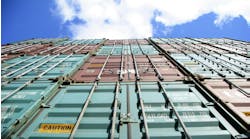Globalization Brings New Risks into the Supply Chain
In recent years, a multitude of companies have taken advantage of global sourcing opportunities in order to compete more efficiently, whether through reduced production costs, proximity to market or the need for specialized skills. Nevertheless, these advantages have introduced new risks into today’s increasingly complex supply chains. While some of these risks are direct, like supply chain disruption, others are less obvious—such as intellectual property theft and public relations crises—but still potentially threatening to businesses.
In an effort to reduce these risks, everyone is talking about supply chain risk management (SCRM); whether or not they’re putting it into practice is a separate concern. But what is it? And what’s driving this heightened interest?
Arguably, extreme phenomena—such as the tsunami in Indonesia or the nuclear incident in Japan—are more prevalent today and have a highly visible impact on supply chains. In truth, though, globalization has introduced new business realities that require companies to assess risk exposure more carefully and to prepare for potential disruptions.
As trade barriers fell and worldwide logistics improved, production shifted to lower-wage countries that offered lower sourcing costs, even despite the higher transportation, warehousing and obsolescence costs associated with offshore sourcing. As this trend strengthened, a desire to be “in the game” pushed companies to move so fast into a situation they didn’t understand (local regulations, social values, worker safety standards) without thinking through long-term logistics costs or future ability to reshore.
At the same time, new efficiencies of scale have eliminated barriers to market entry for all kinds of organizations in low-cost producing countries like India, China, Bangladesh and Mexico—in turn putting tremendous pressure on margins and forcing local firms to find creative ways to cut costs.
Finally, today’s consumers place great importance on ethical, safe and sustainable business practices, so global companies must be aware of labor or environmental practices that their customers do not view favorably.
Together, these factors are forcing companies to implement formal SCRM plans and controls. But while many are talking about risk management, few have completely grasped what it takes to ensure a resilient, agile and sustainable supply chain. And even fewer are making the changes necessary to mitigate risks.
What Does This Mean for Today's Supply Chains?
Global and local organizations alike must be more prepared than ever for any event, anywhere in the world, that could force them to either find a new supply source or reroute their supply chain. To aid their ability to react, many companies are turning to complex new technologies that augment best practices. Others are exploring new, increasingly global sourcing options. In addition, every organization needs to determine its risk tolerance in the following areas and implement the right supply chain management framework for its operations:
Product costs vs. supply dependency:Switching to a low-cost supplier might mean being dependent. At the same time, mid-market organizations may not have the purchasing power advantage and global sourcing opportunities that larger competitors have and may need to go with the lowest product cost just to compete.
Intellectual property (IP):Theft is on the rise, and standards (and enforcement) vary greatly by country. Large organizations may have the “pick of the litter” in terms of offshore manufacturers. Mid-sized manufacturers may not be so lucky.
Offshoring vs. outsourcing vs. nearshoring vs. insourcing:Before determining the right business model, consider all relevant factors—wages, transportation costs, shipping times, training, workforce output, time to hire, quality, traceability, sustainability, local business practices, government policies and restrictions, etc. And once you choose a business model, continue to reevaluate it against your risk tolerance and business objectives.
Technology:New technologies emerge every day to “revolutionize” the supply chain, but not all technologies are alike. Focus on implementing and training your team on demand planning tools that actually predict and manage volatility, not tools that give you point in time data or best-estimate approximations, SCRM for mitigation and supply network planning and optimization and finally logistics monitoring and visibility tools.
Image:Today’s consumers have more options and want to know where products came from and how they were manufactured. What’s more, information is readily available to consumers, and with the prevalence of social media, bad news spreads fast. If you don’t know from where all of your products are sourced and who is making them, you could risk a PR nightmare that leads customers directly to competitors.
Being Successful in Today's Environment Means Managing Uncertainty
How will you face so many uncertainties and potential challenges? You certainly can’t control all external forces (political, natural disaster, energy cost, counterfeit and others) but you can start by making SCRM an integral part of your organization’s strategic planning process and redefining your internal practices and processes.
As you plan for the future and build on strengths, make sure you understand the risks and threats that could cause you to lose your competitive advantage. All of your executives need to be involved in this process. In addition, you will need an emergency plan for new external or internal threats.
A proper SCRM plan is not about building fear in the organization, but about bringing peace of mind that your organization has taken the time to understand what is important and how to protect what is important should a crisis happen. Managing uncertainty not only helps hedge against the risks posed by supply chain disruption, but also to manage the fallout in the event of a PR crisis or IP theft. Even better, effective risk management will allow your organization to sidestep potential difficulties before they arise, while mitigating those that do occur. This will ultimately make your organization stronger and ready to take advantage of situations that cause others to flounder.
Yves Belanger is a director and industrial engineer specializing in workforce optimization with West Monroe Partners. Yves Leclerc is a managing director and leads West Monroe’s supply chain practice and Canadian offices.




